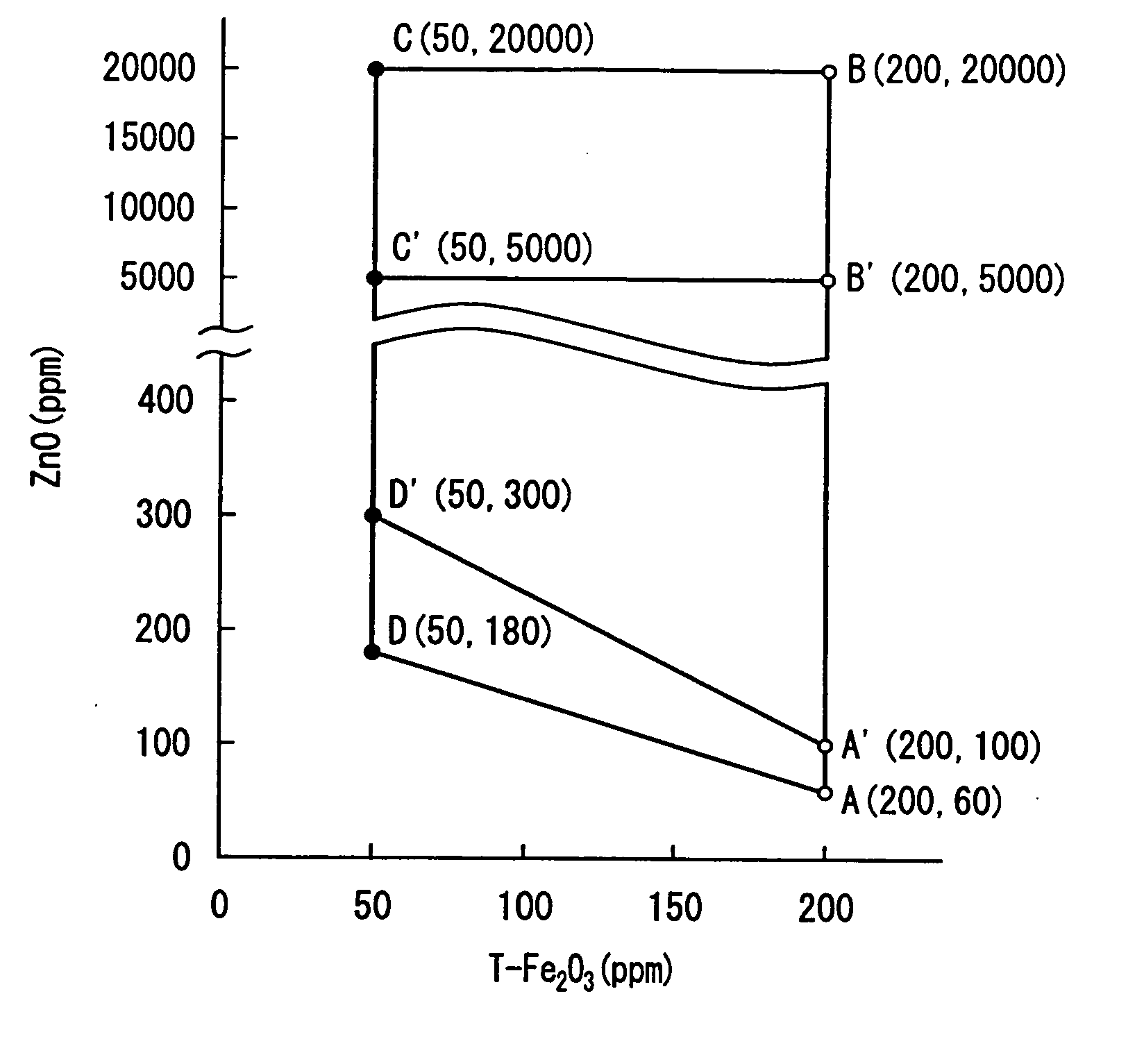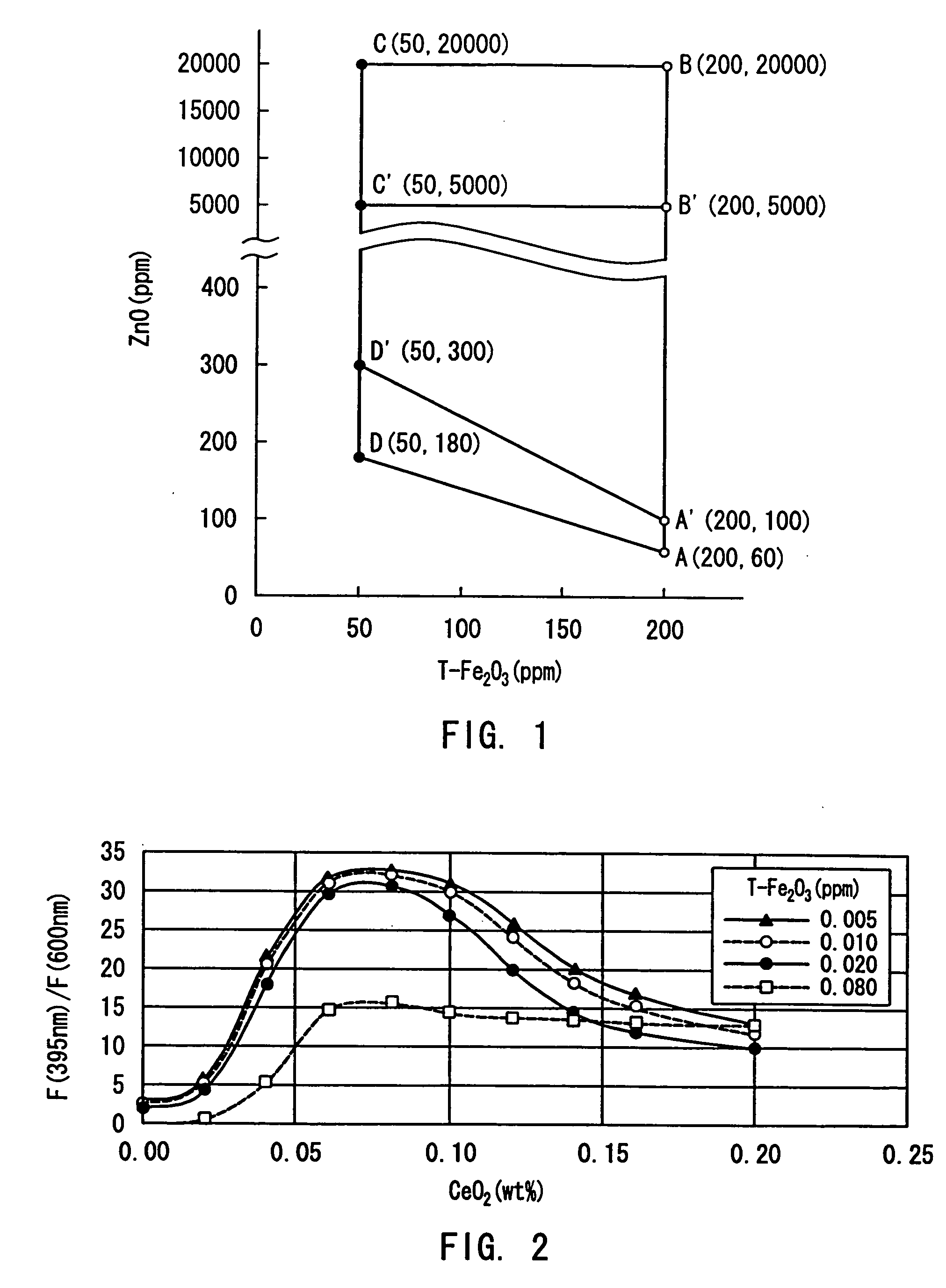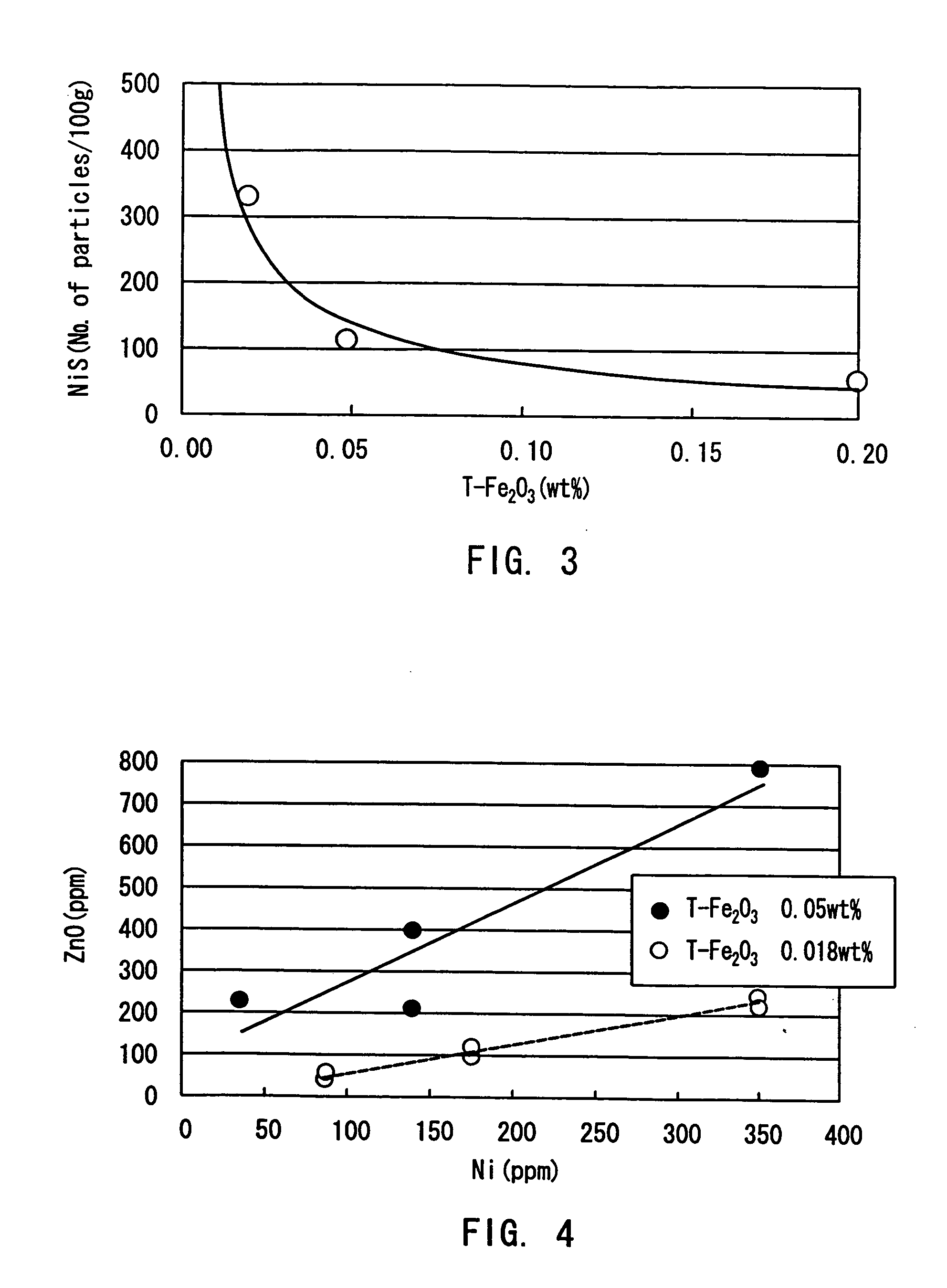High transmittance glass sheet and method of manufacturing the same
a technology of transmittance glass and transmittance, which is applied in the direction of glass rolling apparatus, glass tempering apparatus, manufacturing tools, etc., can solve the problems of micro cracks in the vicinity of nis particles, difficult to detect nis particles on production lines, and spontaneous fracture of tempered glass
- Summary
- Abstract
- Description
- Claims
- Application Information
AI Technical Summary
Benefits of technology
Problems solved by technology
Method used
Image
Examples
examples 1 to 18
[0061] Glass batch materials having compositions shown in Tables 5 to 7, in which the respective contents are expressed in terms of oxide and in wt. %, were prepared using low-iron silica sand, alumina, limestone, dolomite, soda ash, salt cake, magnesium oxide, cerium oxide, manganese dioxide, zinc sulfate (ZnSO.sub.4.7H.sub.2O), and a carbon-based reducing agent. Each batch of these materials was heated in an electric furnace to a temperature of 1,450.degree. C. to be melted. After four hours of melting, the batch was poured onto a stainless steel plate and annealed to room temperature, so that a glass sheet having a thickness of about 10 mm was obtained. In the tables, the values of concentration are expressed in wt. %.
[0062] After that, the surface of the glass sheet was ground so that a glass sheet sample having a thickness of 4.0 mm was obtained. With respect to each sample thus obtained, measurements were performed using the illuminant C for optical properties that are a visib...
PUM
| Property | Measurement | Unit |
|---|---|---|
| transmittance | aaaaa | aaaaa |
| transmittance | aaaaa | aaaaa |
| transmittance | aaaaa | aaaaa |
Abstract
Description
Claims
Application Information
 Login to View More
Login to View More - R&D
- Intellectual Property
- Life Sciences
- Materials
- Tech Scout
- Unparalleled Data Quality
- Higher Quality Content
- 60% Fewer Hallucinations
Browse by: Latest US Patents, China's latest patents, Technical Efficacy Thesaurus, Application Domain, Technology Topic, Popular Technical Reports.
© 2025 PatSnap. All rights reserved.Legal|Privacy policy|Modern Slavery Act Transparency Statement|Sitemap|About US| Contact US: help@patsnap.com



